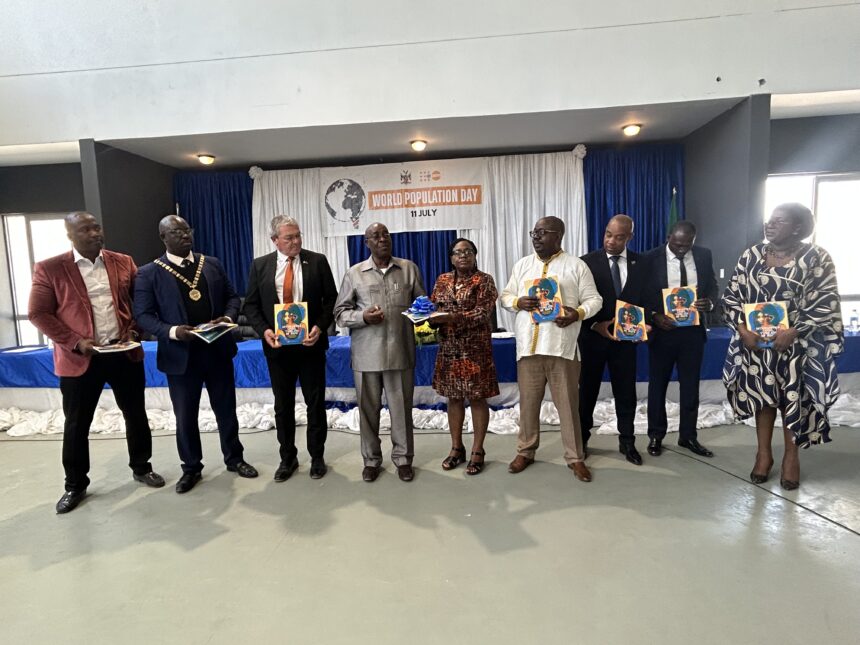KATIMA MULILO – Health minister Kalumbi Shangula said Namibia has made strides and progress in areas like reducing maternal mortality.
In a speech read on his behalf by Zambezi governor Lawrence Sampofu during this year’s belated World Population Day celebration last week, he referred to the latest data of 2020,
which indicates that the maternal mortality rate stands at 215 per 100 000 live births.
Equally, he said progress has been made towards the achievement of universal access to sexual and reproductive health during the last three decades.
“These issues have been integrated into our national development plans, policies and strategies, with recent inclusion in Universal Health Coverage (UHC)-related policies and programmes. The contraceptive prevalence rate (CPR) increased from 23% in 1992 to 61% in 2020 for women aged 15-49 years,” the minister said.
However, he stressed that it is important to emphasise that progress varies from region to region due to specific challenges, which are being addressed.
The event saw the launch of the United Nations Population Fund (UNFPA) State of the World Population Report 2024. It serves as a powerful reminder that advancing interventions related
to sexual and reproductive health is crucial for achieving sustainable development, and building a more equitable and prosperous future for everyone.
Shangula said Namibia has consistently emphasised the importance of family planning, access to contraceptives, and safe motherhood.
Therefore, he commended his
team for working tirelessly to dismantle the barriers which prevent
individuals from accessing health services, including those who promote and expand reproductive health services.
On 18 September 2024, together with his team in partnership
with B2Gold, Namibia officially inaugurated a clinic in Orwetoveni, a settlement in Otjiwarongo.
“This clinic and other initiatives also demonstrate the commitment of the Ministry of Health and Social Services (MoHSS) to decentralising healthcare and ensuring equitable access for all Namibians, especially those in underserved communities,” he stated.
Erika Goldson, the UNFPA Namibia Representative, said: “These improvements have helped to deliver better healthcare to people worldwide, leading to major advances in sexual and reproductive health, and allowing people to exercise their rights and make choices. New technologies are helping to measure people’s experiences more accurately and timely than ever before”.
She observed that marginalised communities are still often left out of data, which greatly impacts their lives.
The report encourages governments, civil society organisations and other stakeholders to fulfil the commitments made at the International Conference on Population and Development, and to accelerate efforts to achieve universal access to sexual and reproductive health services.
It emphasises the need for stronger data-collection and analysis to monitor progress, and identify areas where action is needed most.
“We will continue to provide these services to our citizens in all parts of the country,” Shangula assured.
The minister appreciated the partnership involving the Namibia Statistics Agency (NSA), the Zambezi governor’s office and the local community, aimed at promoting the issues of sexual and reproductive health in the country.
“It is such partnerships that can create the changes we desire. The NSA plays a crucial role in gathering and analysing data for national development. Analysing health-related data, the MoHSS will be able to enhance our policies and interventions in order to serve our people better,” he added.
Equally, the politician said data allows for targeted interventions and resources’ allocation to address challenges faced by a specific community.
Meanwhile, NSA statistician general Alex Shimuafeni articulated elements related to the power of inclusive data very well.
He said the NSA remains committed to ensuring population data is collected accurately, as done during national censuses.
“This is unlike in the past during the pre-independence era when South Africa, as the colonial master, flew over the country with an aeroplane, took aerial pictures, and then did an estimation about the population of Namibia,” he said.
-anakale@nepc.com.na


